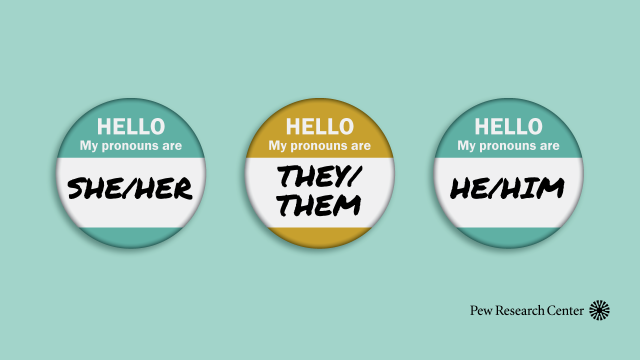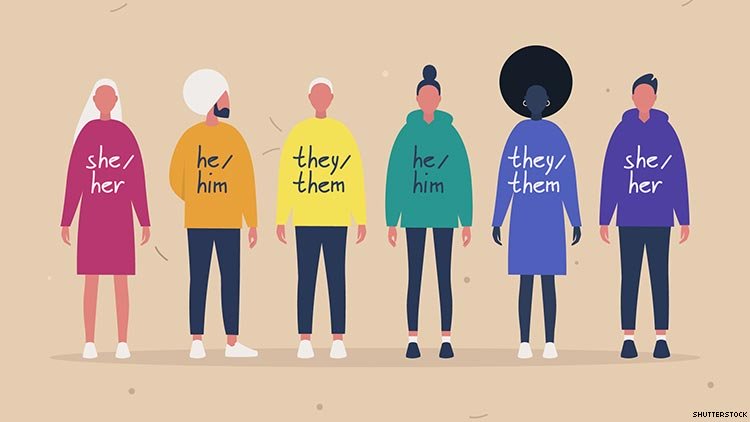The Importance of Accurate Use of Pronouns for Counseling Professionals
Transgender, non-binary, and gender non-conforming persons have been historically and continue to be marginalized by healthcare systems in the United States, including mental health care providers. Misgendering, or referring to someone by incorrect pronouns, has been associated with poor mental health outcomes, such as depression and anxiety (Reisner et al., 2016).
Both the American Counseling Association (ACA; 2010) and the American Psychological Association (APA; 2015) require the affirmative use of pronouns as a part of competent clinical practice with transgender, non-binary, and gender non-conforming clients. The correct use of someone’s pronouns is a basic competency rather than best practice; failure to do so is disrespectful, discriminatory, and enabling of systemic oppression.
Counseling professionals and mental health practitioners should ask their clients and colleagues about their pronouns rather than making assumptions (i.e., “What are your pronouns?”).


It is important for counseling professionals to use the language a person uses for themselves. For example, if someone informs the mental health practitioner that she uses ‘she/her/hers’ pronouns, that professional should not later default to using a gender-neutral pronouns such as ‘they/them/theirs.’ Many gender expansive people use other gender-neutral pronouns (e.g., ze/hir/hirs, ve/ver/vis, per/per/pers), and counseling professionals should become familiar with and comfortable using these pronouns if they are not already.
Counseling professionals should use their clients’ pronouns in all clinical documentation as well.
In research and scholarship, counseling professionals must use the correct pronouns for any person that they reference (APA, 2020). Writers must also use ‘they’ instead of ‘he or she’ when referencing individuals to avoid enforcing a gender binary that does not apply to many people (APA, 2020).
In addition, as an advocate, adding a pronoun line onto your email signature is a way to bring pronoun use more visibility, communicate to Queer and Trans people that you are aware of the importance of pronouns, and educate others on the importance of pronouns use. Also, in your introductions with clients and at meetings, get in the habit of introducing the pronouns you use along with your name (e.g., My name is... and my pronouns are...).
SAIGE’s stance is that the accurate use of pronouns is an ethical mandate for all counseling professionals. This mandate is inclusive of clinical practice and documentation (ACA, 2010; APA, 2015), research and scholarship (APA, 2020), and advocacy efforts on behalf of or in collaboration with clients.
SAIGE further recommends the following resources as tools to help counseling professionals/mental health practitioners understand and accurately use the pronouns of their colleagues and clients:
- University of California San Francisco (UCSF): Pronouns Matter
- Everything You Ever Wanted to Know About Gender-Neutral Pronouns
- Providing Transgender-Inclusive Healthcare Services
- Supporting the Transgender People in your Life: A Guide to Being a Good Ally
References
American Counseling Association. (2010). American Counseling Association competencies for counseling with transgender clients. Journal of LGBT Issues in Counseling, 4(3), 135-159. http://dx.doi.org/10.1080/15538605.2010.524839
American Psychological Association. (2015). Guidelines for psychological practice with transgender and gender nonconforming people. American Psychologist, 70(9), 832-864. http://dx.doi.org/10.1037/a0039906
American Psychological Association. (2020). Publication manual of the American Psychological Association (7th ed.). https://doi.org/10.1037/0000165-000
Reisner, S. L., Katz-Wise, S. L., Gordon, A. R., Corliss, H. L., & Austin, S. B. (2016). Social epidemiology of depression and anxiety by gender identity. Journal of Adolescent Health, 59(2), 203-208. https://doi.org/10.1016/j.jadohealth.2016.04.006

